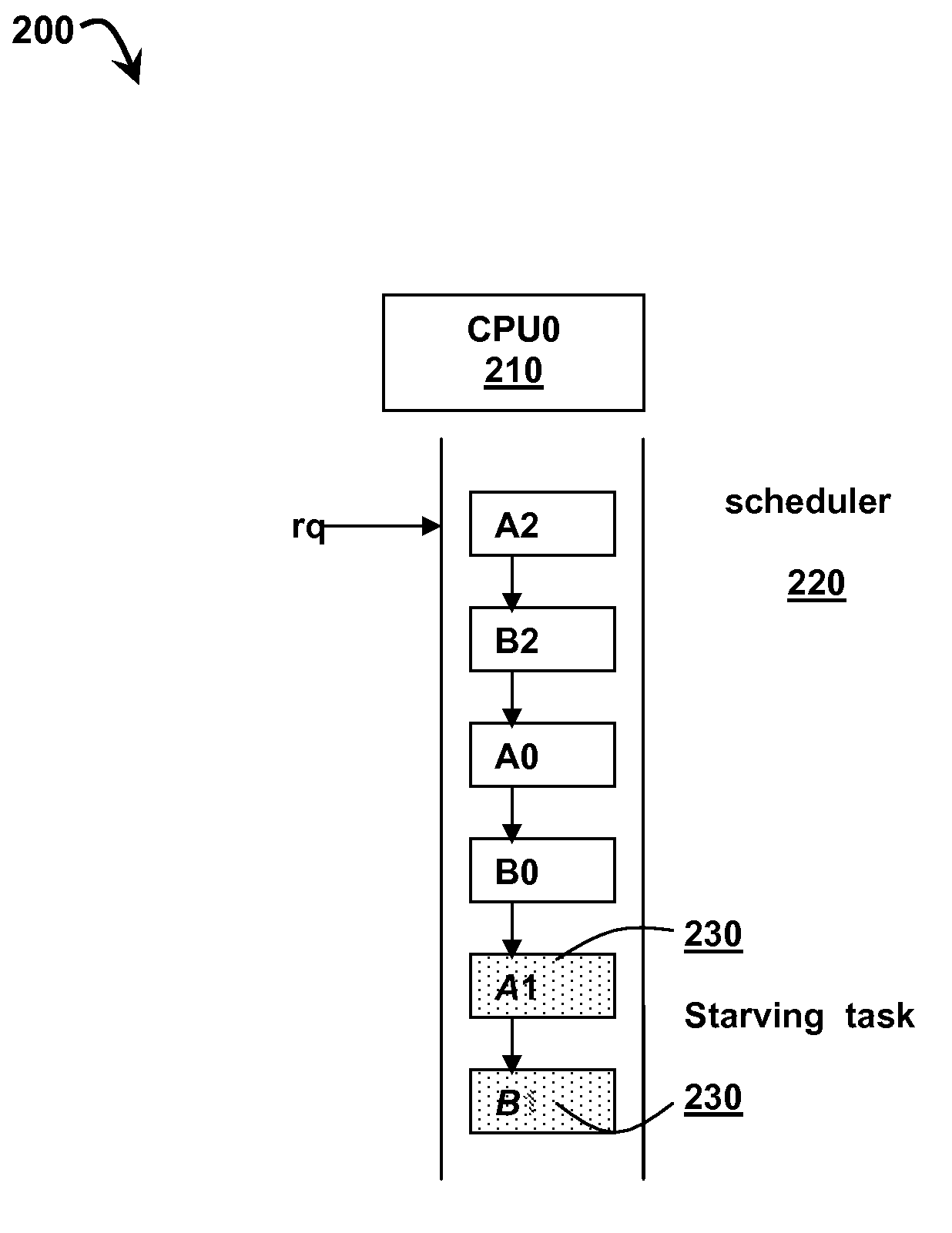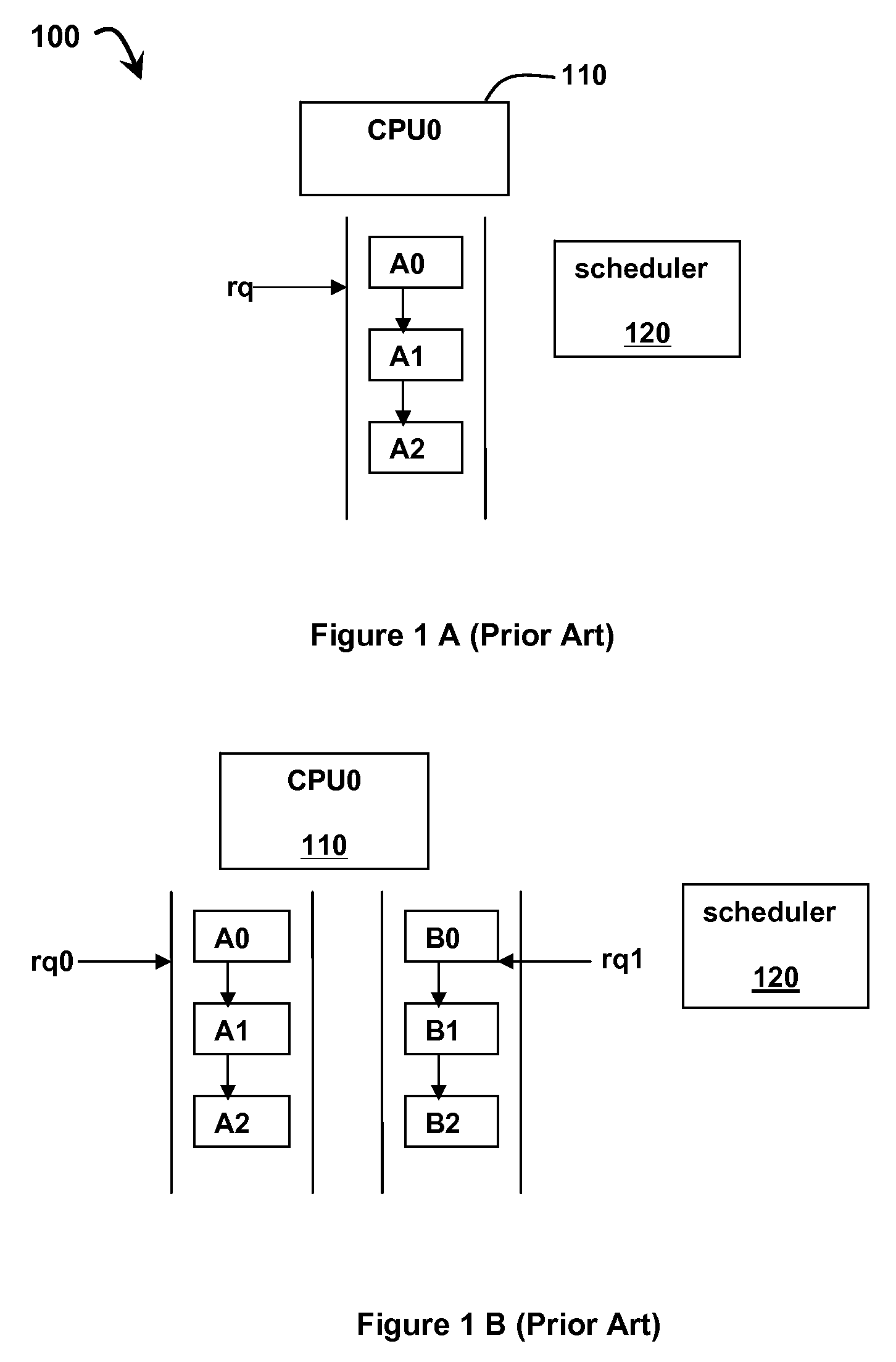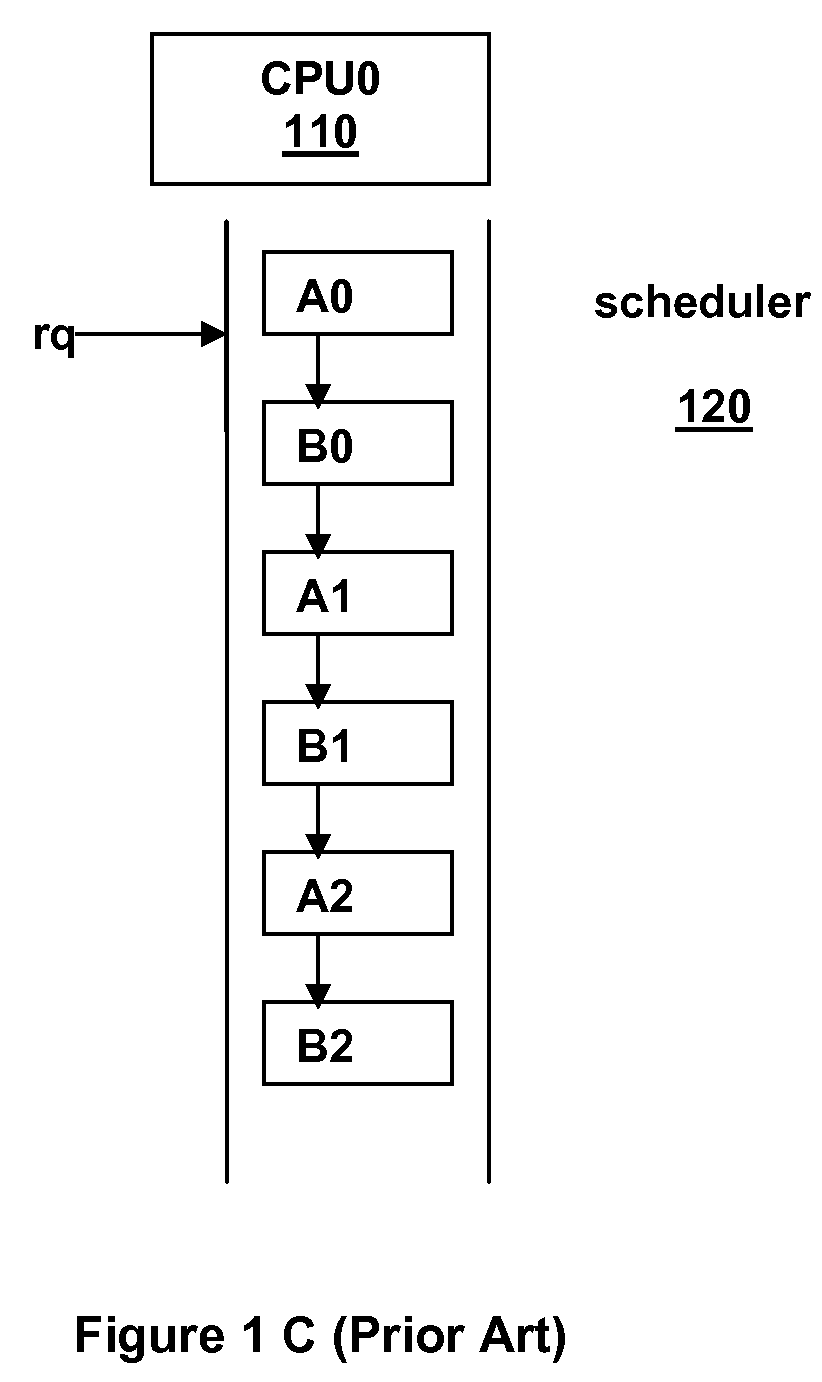Simulating a multi-queue scheduler using a single queue on a processor
a scheduling machine and single-queue technology, applied in the direction of multi-programming arrangements, program control, instruments, etc., can solve the problems of prohibitive cost and the promise of this technology may never be fully realised
- Summary
- Abstract
- Description
- Claims
- Application Information
AI Technical Summary
Benefits of technology
Problems solved by technology
Method used
Image
Examples
Embodiment Construction
[0043]The following is intended to provide a detailed description of an example of the invention and should not be taken to be limiting of the invention itself. Rather, any number of variations may fall within the scope of the invention, which is defined in the claims following the description.
[0044]FIG. 2 illustrates an exemplary embodiment of scheduling tasks 200 in accordance with the present invention. The scheduler 220 does not use separate queues for each group here, but categorizes the tasks into relevant groups and executes these tasks in accordance with a pre-determined schedules. There is a single rq, which stores tasks belong to group A and group B and executes them in an order. Once tasks in a particular group has used its allocated timeslice, the remaining tasks are then moved to the end of the run-queue and are shown in FIG. 2 as starving tasks 230. In a normal consequence, these would have been executed in the remaining timeslice, however since there is insufficient t...
PUM
 Login to View More
Login to View More Abstract
Description
Claims
Application Information
 Login to View More
Login to View More - R&D
- Intellectual Property
- Life Sciences
- Materials
- Tech Scout
- Unparalleled Data Quality
- Higher Quality Content
- 60% Fewer Hallucinations
Browse by: Latest US Patents, China's latest patents, Technical Efficacy Thesaurus, Application Domain, Technology Topic, Popular Technical Reports.
© 2025 PatSnap. All rights reserved.Legal|Privacy policy|Modern Slavery Act Transparency Statement|Sitemap|About US| Contact US: help@patsnap.com



